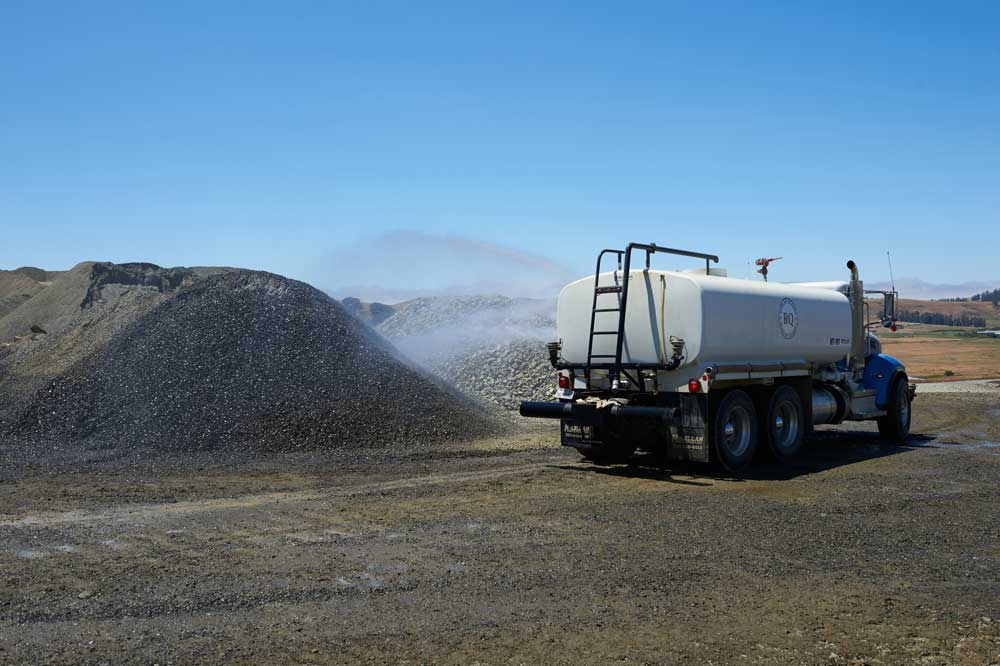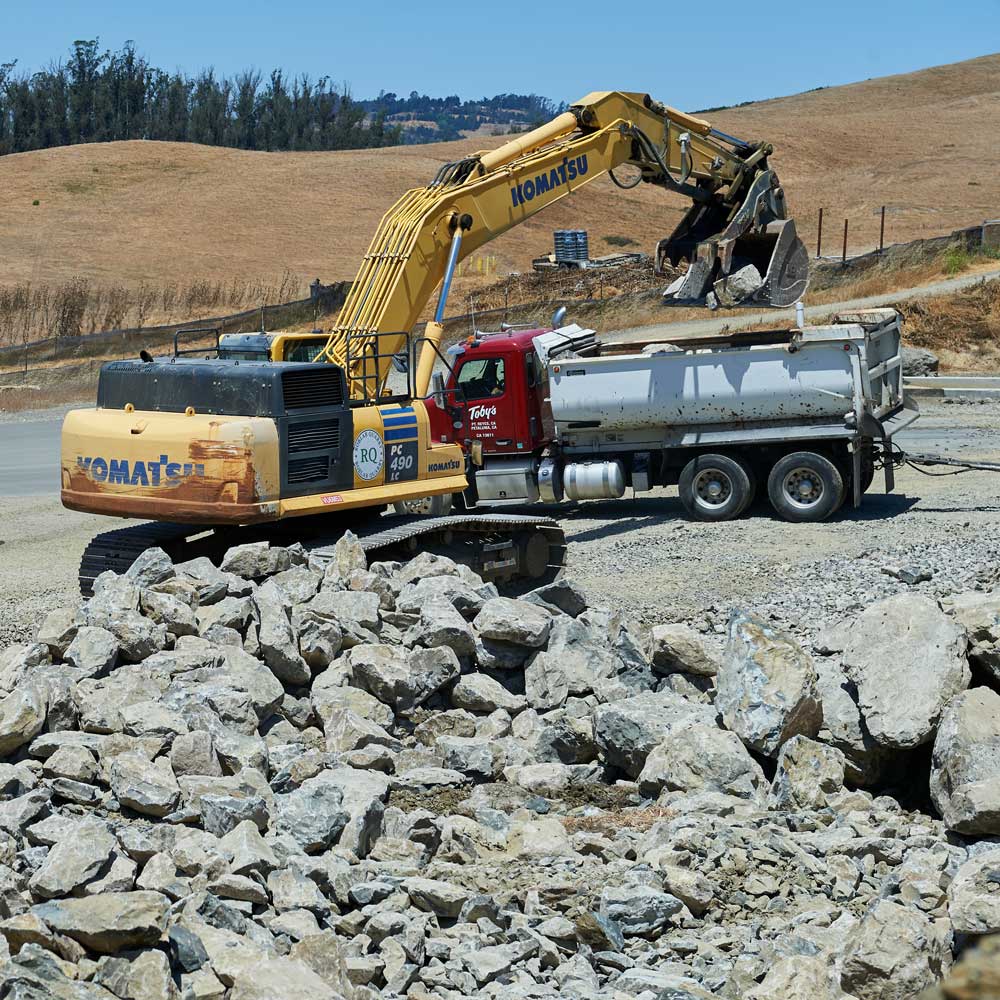Construction projects rely on the services of project engineers, estimators, and procurement professionals when preparing bids or planning large-scale builds. Whether you are dealing with foundation work, trench excavation, or site grading, you need to understand the volume of construction work needed for your project.
This blog delves into the critical role of rock estimate, construction rock, and project bidding and why these are important in the success of a construction project.
The Cost and Operational Impact of Underestimating or Overestimating
There is always the potential to underestimate or overestimate the construction rock needs for your project. Underestimating your project’s rock needs can result in change orders, costly project delays, and equipment remobilization.
Similarly, an overestimation of your rock needs can impact project bidding, making it less competitive and more costly for your project.
The Role of Accurate Quantities in Competitive Bidding and Scheduling
Accurate quantities, as detailed in the bill of quantities, play a critical role in competitive bidding and scheduling in the construction industry. Specifically, accurate quantities inform:
- Cost precision: With the correct quantity, one gets to make the correct cost estimates, meaning that every material, labor cost, and equipment has a detailed and reliable cost projection.
- Resource allocation: Accurate quantities also inform efficient resource allocation by showing managers the amount of material to procure, the equipment needed, and the number of workers to hire.
- Bid accuracy: Bidding on construction projects requires accurate quantity calculations, such as the amount of material needed and labor, in order for contractors to submit competitive and realistic bids.
- Cost control: Accurate quantities serve as the baseline for cost control in the construction industry. As a project manager, you can compare actual quantities with estimated quantities and adjust in case there are differences.
Rock Type Selection Impacts Pricing and Availability
Construction aggregate is an essential component in construction projects as it serves as the foundational material for roads, structures, and infrastructure development. Every construction project requires a unique type of rock, which also has an effect on its prices and availability.
Crushed rock aggregate requires a complex production procedure, starting from screening to the removal of fines and waste material. The process then proceeds to include crushing and screening to produce specific sizes of crushed rock, ranging from 20 to 50mm. The complex production process impacts the availability and the cost of crushed rock.
Sand and gravel production entails extensive washing and scrubbing to remove clay, followed by screening to separate the sand fraction. Gravel grading is also a necessary step, which is then followed by sand classification and dewatering. These extensive processes affect the availability and the prices of aggregates.

How to Calculate Volume: Using a Cubic Yard Calculator
Before you figure out your crushed rock needs, you must measure volume. Any form of guessing can lead to shortfalls, delays, or big leftover piles cluttering the site. The process is simple in theory: measure length, width, and depth, but each detail matters more than it seems.
Start by measuring the area in feet. Depth is where many slip up because it needs converting from inches to feet. For example, 4 inches is 0.33 feet. Once all measurements are in feet, the formula is straightforward: length × width × depth, then divide by 27. This final step converts cubic feet into cubic yards.
Using a cubic yard calculator simplifies this step, helps avoid manual errors, and makes it easier to plan for crushed rock in tons. One cubic yard of crushed rock weighs about 1.5 tons. That number lines up with truckloads and supplier pricing.
A practical example: A 10-by-20-foot parking pad at 4 inches deep requires about 2.5 cubic yards, or around 3.7 tons. Add around 10% extra to cover waste and compaction. Without that buffer, crews may find themselves spreading too thin or scrambling for another load to finish.
Matching the Material to the Job: Base Material, Crushed Rock Needs, and Road Base
After volume, the next crucial step is matching material to purpose. It is tempting to think all rocks are equal, but real-world projects show otherwise. Choosing the wrong type can derail even the most careful volume estimate.
Crushed rock is highest for structural strength and compaction. The sharp, angular edges interlock, making it ideal for pads, heavy-duty roads, and structural bases. Crushed rock is important for high-load areas that need long-term stability.
Base material, sometimes called flex base, blends crushed rock and fines to create a compacted surface that still flexes slightly under stress. According to TxDOT and flex base guidelines, these materials are compacted to 100% of maximum dry density, which helps spread out heavy vehicle loads and reduces future cracking.
Road base uses a mix of base material and fines for tight compaction and smoother finishes. It is built to support pavement layers and absorb years of traffic stress without breaking down. Unlike base rock, it traps more moisture and compacts more densely, which can be a problem for certain drainage-heavy projects.
Each application has specific needs:
- Heavy equipment pads and industrial yards benefit from Type A or D base material to avoid rutting.
- Walkways do better with smaller, clean crushed rock for comfort and drainage.
- Trenches often rely on washed stone to avoid water buildup against pipes.
Compaction always affects volume needs. Materials with high fines content will shrink more when compacted, which means ordering more upfront to avoid thin spots later.
Estimating for Bulk Orders and Accounting for Jobsite Quantities
Ordering at scale means small errors grow quickly. A slight miscalculation can freeze a jobsite while crews wait or leave mounds of unused material in the way. To prevent these headaches, a solid volume estimate must include a contingency.
Most experienced teams recommend adding 10% extra to account for spillage, compaction loss, and rough terrain. Sites with soft or uneven ground need more, as rock can settle unpredictably or spread unevenly.
Phased delivery is another practical tool. Instead of flooding the site with all bulk orders at once, schedule deliveries to match site progress. This keeps staging areas open and ensures rock arrives exactly when crews are ready to spread and compact.
Open communication with suppliers is essential for managing job-site quantities. Changes in design, sudden weather shifts, or soil surprises can all change how much material is needed. Suppliers who can adapt deliveries quickly help keep projects moving without costly standstills.
Waste is not just about piles left behind. Adjusting for unexpected trench expansions or fixing uneven subgrades can quietly eat up planned volumes. That extra 10% protects against real-world surprises.
Finally, careful logistics planning helps avoid last-minute panic. Thinking through where rock will be stockpiled, how trucks will move through the site, and when each load arrives prevents dangerous bottlenecks and wasted labor.

Partner With a Supplier Who Supports Accurate Estimating
Supplier experience matters in verifying your numbers when working with rock estimates. For instance, timeliness is one quality that you get to enjoy if you have a trusted supplier as a partner.
As a performance aspect, timeliness ensures that you get your construction rock on time. Partnering with a supplier who supports accurate estimating also means you get to enjoy consistency and flexibility, which are equally important.
If you are looking for cost and time efficiency, you should consider working with Roblar Quarry LLC to ensure that you are estimating correctly from day one. We ensure that you get an accurate rock volume estimation because underestimation can lead to major financial losses and project delays.
Our team of experts offers you precise calculations using trusted methods to ensure that you can bid competitively, manage your resources, and avoid costly rework. Estimators and project planners also get access to different tools and extensive consultation to enhance efficiency, accuracy, and overall project success.
